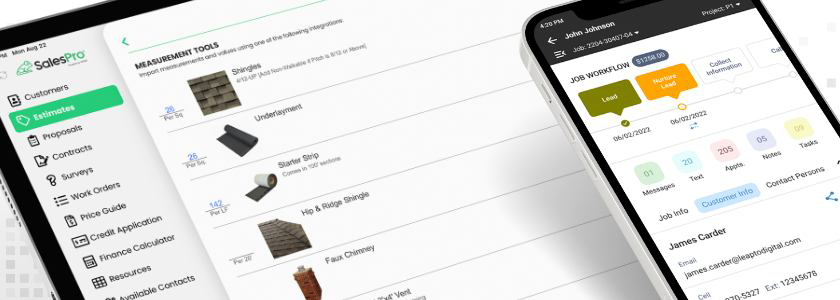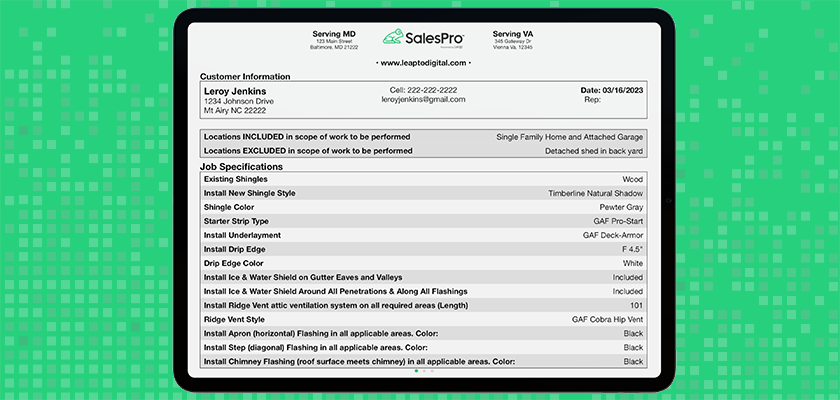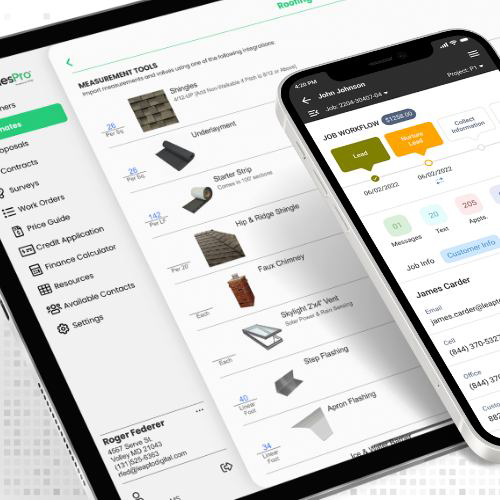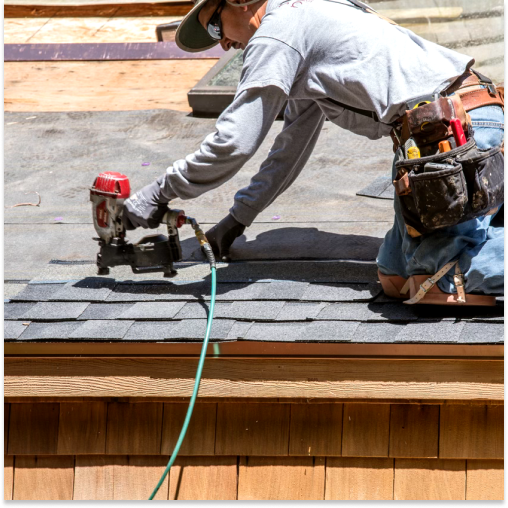Do you know what should be included in a roofing estimate? If not, you are most likely struggling to build trust with homeowners and losing out on potential customers. It’s important for contractors to provide clear and professional estimates that put the homeowner’s mind at ease.
In fact, there are many key elements to include in a roofing estimate that will protect both the homeowner and your business. Let’s dig deeper below and learn why contractors are going digital with their estimates and sales process.

Key Elements to Include in a Roofing Estimate
Homeowners are protective over their money and their investments. Rightfully so, as it’s a difficult time for the American economy. Therefore, contractors must include many key elements in their estimates to provide clarity and comfort to homeowners.
For example, here’s what should be included in a roofing estimate:
According to IBISWorld, there’s more than 35,000 roofing businesses in the U.S. in 2023. And as you can imagine, every business provides different specifications in their estimates and quotes. However, the list above is considered the industry standards that are necessary for each estimate.
Business Contact Information
You can’t work with homeowners if they don’t know who you are or how to contact you! This is straightforward, but many contractors leave out the tiny details that can make a difference.
Here’s what should be included in a roofing estimate front and center: your business name, contact information, address, and website. You will also want to include the date on which the estimate was prepared and contact information for the potential customer.
These are standard practices for roofers. But they are often overlooked, which can cause communication problems later in the project.
Proof of Insurance and Licensing
Each state and certain cities have different insurance and licensing requirements. For instance, this usually includes liability insurance. Moreover, you may also need to acquire permits to do work on specific projects.
Be sure to include all of this information in your estimates. Not only does this protect your business, but it gives the customer confidence that you’re providing respectable work and not cutting any corners.
Job Description, Scope of Work, and Project Timeline
This is where the major details come into play. Every roofing estimate should include a detailed description of the job, the scope of the work, and timeline for the project start date and completion.
Outline who’s responsible for what and when it will be done. Also include the current state of the customer’s roof and the work that is needed. In some cases, repairs are needed instead of a complete replacement. Explain these details to help the homeowners have a better understanding of the project and what they are paying for.
Materials and Roofing Components
What is the customer actually buying? Here’s what should be included in a roofing estimate to provide clarity over products and specific roofing components.
Breakdown the brands and types of roofing materials you will be using for the project. For example, typical roofing materials include shingles, underlayment, ventilation, and flashing.
What type of tiles are you using? And which brand has the customer selected? This information helps the customer understand the costs and the benefits of each product. It also helps you prepare the contract and order materials once you close the deal.
Guarantees and Warranties
Most roofing products come with a manufacturer’s warranty that protects the customer in case of damages. Otherwise, most contractors provide guarantees and workmanship warranties that ensure the quality of their work.
This helps you build trust with the homeowner before the work has even started. It’s a great way to back up your word with your work and build a great reputation within your service area. You need to clearly list out this information within the estimate.
Cleanup and Removal
Roofing projects can get messy. And homeowners don’t want to be left with discarded materials and construction debris.
Therefore, you will want to include information about waste management. Depending on the size of the project, you may require a dumpster rental or hauling services to remove debris. This can affect the cost of the project and must be clearly stated in the estimate.
Project Cost Details
Roofing projects aren’t cheap. And homeowners are more informed than ever before. They will want to know the tiny details that go into the cost of the project. Be sure to include the overall project cost and how you came to this number.
The list of materials and roofing components above will come into play here. In general, the project cost should include labor and materials, clean-up costs, and permits if applicable. Furthermore, you can offer different packages, such as good-better-best pricing to close more deals.
This is the most important element to include in a roofing estimate. And it’s usually the deciding factor for homeowners. There should be no hidden fees that can impact the project or the homeowner’s experience.
How to Present a Roofing Estimate
It doesn’t matter how many elements you include in a roofing estimate if your sales experience doesn’t resonate with homeowners. Specifically, most individuals have already done their research on your company before you meet them at the kitchen table.
It’s your job to present your products, estimates, and contracts in a professional manner. You also don’t want to waste anyone’s time digging through product sheets and samples.
That’s why the roofing industry is turning to sales automation and CRM software. If you’re looking to scale your business, convert more leads, and drive higher margins, consider implementing sales software that can eliminate paper errors, create a repeatable process, and measure your success as you grow.
Recent roofing industry trends suggest the market is moving towards sales automation and customer relationship management. And the companies that don’t adjust their strategy will be left behind.
Leap Platform for Roofing Contractors

Going digital can make your business more efficient and effective. With less leads coming through the door due to inflation and the current economy, you have to work smarter.
With the Leap platform, you can create a seamless flow of information throughout your company. This will help you manage your leads as they come in and maximize your operations. You can access every lead, every project, and everything in-between in one, easy-to-use application.
Furthermore, our SalesPro software pairs perfectly with the Leap platform to help your sales reps. With pricing control and digital contracts, the SalesPro software gives your reps the freedom to focus on selling the job and scheduling more appointments.
We also understand the costs of roofing projects are increasing. That’s why we have partnered with industry leaders that help you provide financing options to your customers.
Fill out the form below and schedule a demo with one of our experts to learn more about the Leap platform. Now that you know what should be included in a roofing estimate, it’s time to utilize new technology to make each estimate count!
[leap_form_3 url=’http://go.leaptodigital.com/l/492601/2021-02-23/415qz4′]




